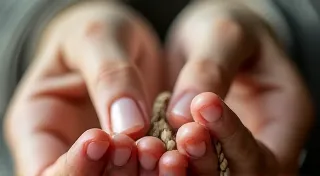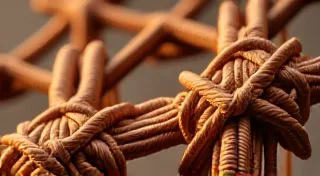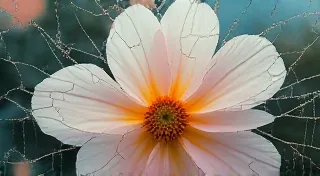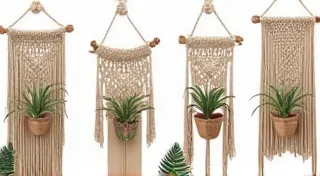Fractured Symmetry: Finding Grace in Macrame’s Imperfections
There’s a quiet, almost melancholic beauty in antique accordions. Holding one, feeling the aged bellows sigh beneath your fingers, evokes a sense of stories whispered across decades, of laughter and lament carried on the breath of long-ago musicians. Each scuff, each crack in the ivory keys, isn’s a mark of damage but a testament to a life lived, a song sung. It mirrors, in a strange and unexpected way, the beauty I find in imperfect macrame. We so often strive for perfect symmetry, for knots that are precisely the same tightness, for patterns that unfold with clinical precision. But what if, instead, we embraced the fractures – the little imperfections that make each piece undeniably, wonderfully its own?
My introduction to macrame wasn’t about meticulous patterns; it was about a desperate need for quiet. My grandmother, a woman of formidable strength and gentle hands, taught me. She wasn’t a 'macrame artist' in any formal sense. She made simple plant hangers, pot holders, and the occasional lopsided owl for Christmas ornaments. They weren’t perfect. The knots weren’t uniform. The fringes weren’t precisely even. But they were filled with a warmth, a personality that no factory-produced item could ever replicate. I remember her saying, “Darling, don’t worry about getting it *just* right. It’s the little quirks that make it special.” It was a lesson about more than just macrame; it was a lesson about life. I often think back to those early lessons and wish I'd known more about different projects; it would have been fun to try something like easy macrame plant hangers alongside those Christmas owls!

The Historical Context: Macrame and Imperfection
Macrame’s history is rich and intertwined with practicality and adornment. Its roots stretch back to 13th-century Arab weavers who used knotted netting for camel blankets and horse trappings. From there, it traveled to Europe, embraced by royalty and sailors alike. Think of the intricate rigging on a ship – a constant interplay of knots, each adjusted slightly based on the conditions, the material, the sheer necessity of holding everything together. There wasn’t time for perfect uniformity; survival depended on adaptability. Later, Victorian era macrame was often used for trimming linens and clothing – a decorative necessity but rarely a showcase of robotic precision. The materials were often recycled, scraps repurposed, further contributing to the inherent ‘flaws’ that made each piece unique. These weren’t seen as weaknesses; they were a badge of resourcefulness and ingenuity. The beauty of those imperfect pieces reminds me of the joy of creating simple, functional items.
Understanding the Cord's Nature
The materials themselves lend themselves to imperfection. Cotton, jute, hemp - each cord possesses its own character. Cotton, especially, reacts differently to tension. Some sections will naturally tighten more than others, creating subtle variations in the knot’s appearance. Jute, with its inherent stiffness, may resist a perfectly even pull. Even the way the cord is spun, the subtle variations in fiber alignment, influence the final outcome. Trying to force a perfectly rigid pattern onto a material with such organic qualities is a recipe for frustration – and a missed opportunity. The unpredictable nature of the cord is part of what makes each project unique, like creating macrame friendship bracelets – small, personal tokens with their own distinct charm.
Think of a musician tuning an accordion. It’s not about achieving a mathematical ideal. It’s about coaxing a resonant tone, adjusting for the quirks of the bellows and reeds. The finest accordion players don't fight the instrument; they listen to it, respond to it, allowing its unique personality to shape the music. Similarly, in macrame, we need to listen to the cord, to feel its tension, to observe how it behaves under our hands. It’s not about imposing our will but collaborating with the material.
Embracing the Asymmetry: Knotting Techniques
Let's look at some common knotting techniques and how to intentionally – or unintentionally – introduce a touch of asymmetry. The square knot, the foundational knot in macrame, is surprisingly susceptible to variation. A slightly tighter pull on one side will create a more pronounced ridge, a subtle visual cue that distinguishes it from its neighbor. The half hitch, often used to create decorative fringes, can be intentionally knotted with different tightness to produce a more organic, less symmetrical appearance. Even the lark’s head knot, with its distinctive loop, can be angled differently to create a dynamic, asymmetrical fringe. Adding texture and dimension, particularly with techniques like the double half hitch, can amplify these subtle variations, further enhancing the piece’s character.
The key isn’t to *aim* for imperfection; it's to be aware of the subtle variations that naturally occur, and to allow them to become part of the design. Don’t be afraid to experiment. Try varying the tension of your knots. Let some sections hang looser than others. Introduce contrasting colors, allowing them to blend and bleed in unexpected ways. Think of a weathered fresco – the cracks and fading aren’t flaws; they’re a testament to time and the elements, adding depth and character to the artwork.
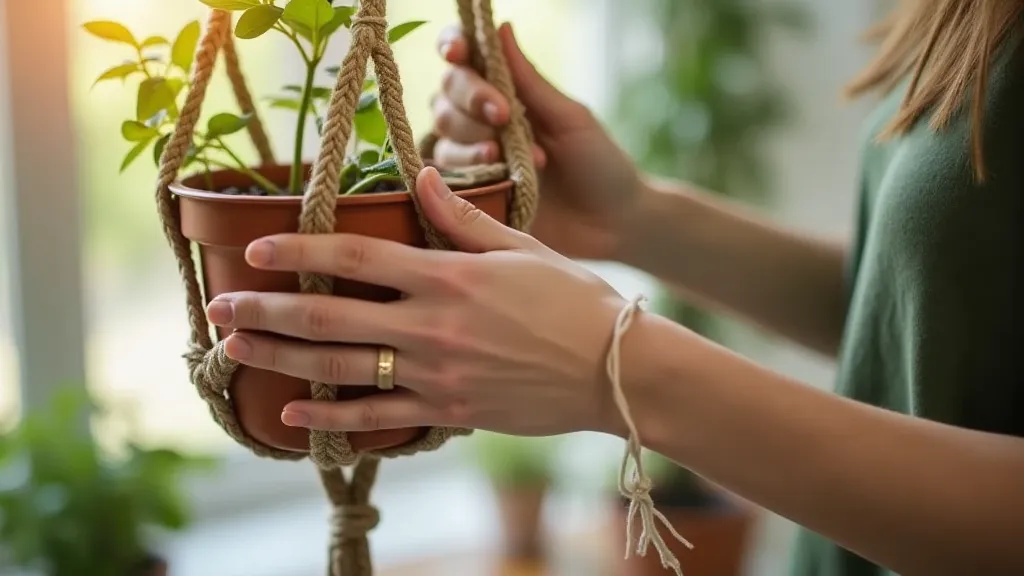
Beyond Patterns: Responding to the Cord
Rigid patterns can be helpful for beginners, a roadmap to understanding the fundamentals. But as you become more comfortable with the basic knots, try moving beyond the prescribed steps. Allow the cord to guide you. Notice how it reacts to your touch, how it shapes itself under your hands. Imagine the musician improvising a solo, responding to the rhythm and flow of the music. What might have started as a ‘square knot’ pattern might subtly transform into something entirely new, a unique expression of your creative hand. Thinking about how to incorporate different types of decorative elements and truly personalize projects – similar to crafting macrame home decor – opens up so many creative possibilities.
The Value of ‘Wabi-Sabi’ in Macrame
This philosophy of embracing imperfection aligns with the Japanese concept of *wabi-sabi*, which finds beauty in transience and impermanence. It’s about appreciating the natural wear and tear, the subtle asymmetries that reveal the passage of time. A piece of macrame isn’t perfect; it's *real*. It tells a story, not just of the knots themselves, but of the hands that tied them, of the cord’s journey, of the unique moment in time when it was created. Like the antique accordion, its imperfections are not flaws, but marks of authenticity, expressions of a beauty that transcends the pursuit of flawless symmetry. The possibilities for incorporating creative touches and unique styles are endless.
Restoring an antique accordion isn't about making it new again. It’s about preserving its character, its history, allowing the patina to remain, a visible reminder of its past. Similarly, in macrame, let the knots speak for themselves. Let the subtle variations in tightness and color be a testament to the unique moment of creation. Let go of the desire for perfection, and embrace the beauty of the fractured symmetry.
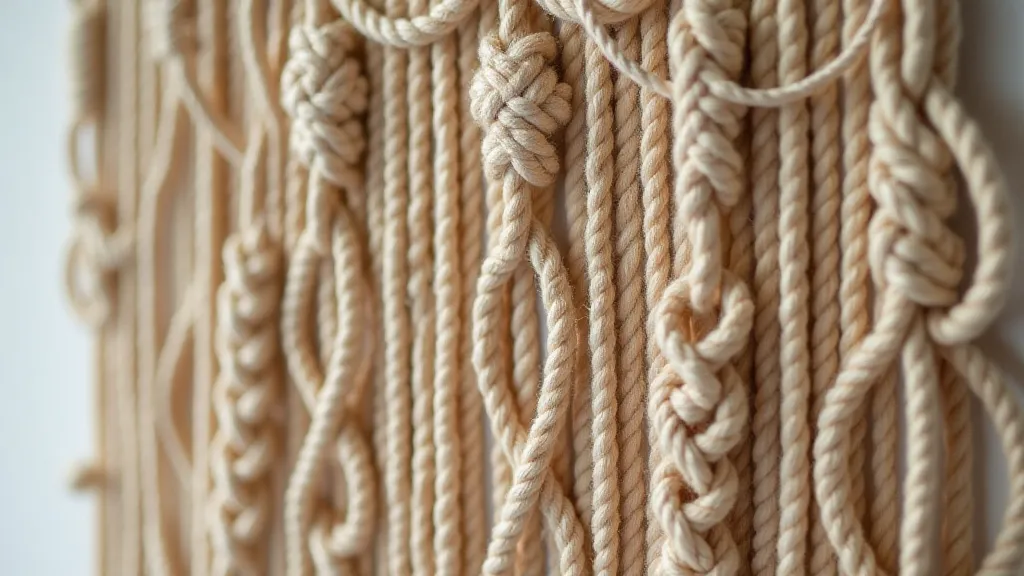
Ultimately, macrame is a tactile experience, a conversation between the maker and the materials. It’s an exercise in letting go, in accepting the unpredictable, and in finding beauty in the unexpected. The journey from beginner to confident maker is a rewarding one, filled with moments of discovery and creative expression. And even for those comfortable with complex knots and patterns, the simple act of experimenting with tension and embracing imperfection can transform a standard piece into a truly unique work of art.
